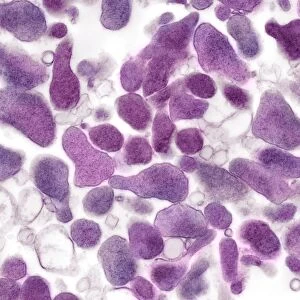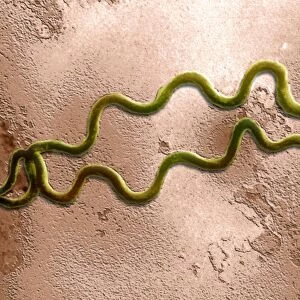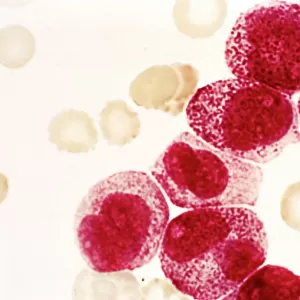Phosphofructokinase bacterial enzyme
![]()

Wall Art and Photo Gifts from Science Photo Library
Phosphofructokinase bacterial enzyme
Phosphofructokinase enzyme, molecular model. This enzyme is from the spirochaete bacteria Borrelia burgdorferi, which causes Lyme disease. The enzyme is involved in regulating the process of releasing energy from glucose. The bacteria, called spirochaetes because of their helical form, are transmitted by ticks and cause Lyme disease. This disease has many symptoms including rashes and arthritis. In this model, solid colours represent the secondary structure of the protein (spiral ribbons are alpha helices; arrows are beta sheets), and the faded tubular structure behind represents the individual atoms and bonds
Science Photo Library features Science and Medical images including photos and illustrations
Media ID 6279657
© LAGUNA DESIGN/SCIENCE PHOTO LIBRARY
Alpha Helix Bacteria Bacteriology Bacterium Beta Sheets Compound Compounds Enzyme Helices Lyme Disease Molecules Proteins Secondary Structure Sheet Spirochaete Bio Chemistry Biochemical Micro Biology Microbiological Molecular Molecular Model Protein
EDITORS COMMENTS
This print showcases the intricate molecular model of Phosphofructokinase, a bacterial enzyme found in Borrelia burgdorferi, the spirochaete bacteria responsible for causing Lyme disease. With its helical form resembling spirals, these bacteria are transmitted through ticks and can lead to various symptoms such as rashes and arthritis. In this visually stunning illustration, solid colors represent the secondary structure of the protein. The alpha helices are depicted by spiral ribbons while beta sheets are represented by arrows. Behind this vibrant display lies a faded tubular structure that signifies individual atoms and bonds. The significance of this enzyme lies in its role in regulating the process of releasing energy from glucose within our bodies. Understanding its molecular composition is crucial for unraveling how Borrelia burgdorferi operates and causes Lyme disease. This image not only highlights the beauty of biology but also serves as a valuable tool for medical professionals studying lyme borreliosis, bacteriology, biochemistry, and microbiology. By examining compounds at a molecular level, scientists can gain insights into potential treatments or prevention strategies against this debilitating disease. Captured by Science Photo Library's expertise in scientific imagery, this photograph offers an engaging glimpse into the complex world of enzymes and their impact on human health.
MADE IN THE UK
Safe Shipping with 30 Day Money Back Guarantee
FREE PERSONALISATION*
We are proud to offer a range of customisation features including Personalised Captions, Color Filters and Picture Zoom Tools
SECURE PAYMENTS
We happily accept a wide range of payment options so you can pay for the things you need in the way that is most convenient for you
* Options may vary by product and licensing agreement. Zoomed Pictures can be adjusted in the Basket.





